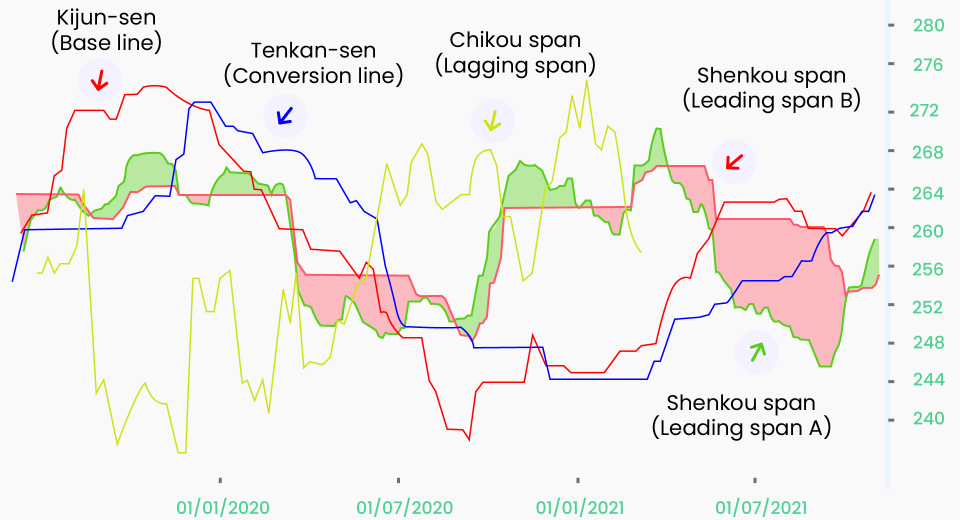The Top 10 Factors That Move the Forex Market

The forex market has earned the reputation of being “the market that never sleeps” because the exchange of currencies never halts. So, there’s never a dearth of trading opportunities. Given its ubiquitous nature, the forex market is affected by calendar events, geo-political incidents, and news updates from across the world. It is, therefore, essential for traders to recognise and use the relevant information, while learning to ignore the noise. So, here’s a look at the top 10 factors that tend to have the most significant impact on currency exchange rates.
Before Diving In
Traders should remember that the highest liquidity and opportunities are available during the overlap of the three most active trading sessions:
- 3:00 – 4:00 AM ET – Overlap of the Tokyo and London Sessions
- 8:00 AM – 12:00 PM ET – Overlap of the London and New York Sessions
- Economic Growth
Positive GDP growth indicates that the economy is growing steadily. This attracts foreign investors, who will need the domestic currency to make investments. In turn, this raises demand for the currency, which impacts the exchange rate of the currency. Conversely, when the GDP numbers are disappointing, the domestic currency tends to weaken.
- Interest Rate Decisions
Interest rate decisions by the central bank of a country tend to have a strong impact on the currency. A hike in interest rates strengthens the domestic currency, attracting more foreign investments. Investors demand currencies with higher relative interest rates, since it means better returns on their investment. Therefore, interest rate is directly related to currency value in the global market.
Did you know?
The biggest forex market movers are interest rate updates by the US Federal Reserve (Fed), the European Central Bank (ECB), Bank of England (BoE), Bank of Japan (BoJ) and Reserve Bank of Australia (RBA).
- International Trade
A country’s trade balance indicates whether the demand for the domestic currency is increasing or decreasing internationally. A negative trade balance (exports outweighing imports) tends to raise demand for the currency, which drives its exchange rates up. However, when imports are higher than exports, a nation’s currency is sold to buy goods from other countries, which weakens the currency’s exchange rates.
- Inflation Rate
The inflation rate figure includes the retail price index (RPI) and the consumer price index (CPI). Low inflation helps a currency appreciate as it indicates that the economy is growing steadily, while high inflation leads to depreciation.
Inflation does not directly impact currencies, since a country’s monetary policy also considers employment levels, manufacturing indices and capacity utilisation, which ultimately affect the currency exchange rates.
- Government Debt
Governments may take loans from the IMF, the World Bank or other nations to fund development activities in their country. This is generally considered a sign of growth and creative expansion. However, this debt could at times becomes too huge for the economy to pay back. This means that the investments required will be higher but returns uncertain, which drives foreign investors away.
Did you know?
Japan has the highest debt level at $9.087 trillion, which is about 234.18% of its GDP. Yet, the economy is considered safe by foreign investors because Japan is the world’s second-largest developed economy and one of the biggest investors internationally.
- Employment and Wages
A decline in the number of unemployed people indicates a strengthening job market, while an increase means that the economy is not growing at a rate aligned with the population growth. But, employment alone is not enough to make forex trading decisions because if wages are stagnant, there will be no improvement in disposable income or personal finances, indicating that the economy is not performing as well as it should.
- Consumer and Business Sentiment Reports
High consumer spending and business growth indicate that the citizens are confident about the country’s economic growth, which then strengthens the currency. It is a leading indicator that allows traders to predict what they can expect from the GDP, inflation and employment figures.
- Retail Sales
Retail sales are also a leading indicator that measures consumer spending power. An increase in retail sales means that consumers feel safe to spend more, which boosts economic activity and lifts the currency. However, increased sales, coupled with stagnant productivity and wage reports (or worse declining numbers), is a sign of consumer fear of an impending economic slowdown and that they are stocking up to prepare for it.
- Political News
A stable political environment indicates high consumer confidence in the government and draws investments. It means lesser policy and regulatory changes, and more stable government investments. On the other hand, a country with political turmoil is likely to face economic disruptions, which can ultimately weaken the currency. Repeated political shuffles may also shake up a country’s international relations.
Geo-political tensions among nations also exert downward pressure on their currencies. For instance, the Russian Ruble fell 40% within days of the Ukraine invasion. The Ukrainian government, which had planned for such times, immediately fixed foreign exchange at 29 Hryvnia per dollar to limit losses to the currency.
- Market Sentiment
Based on all the above events, traders speculate on whether a specific currency will rise or decline going forward. They make trading decisions to buy or sell a currency, directly affecting demand for the currency. Increased demand drives exchange rates higher. Often market activity accelerates just before and during the release of an economic update, in response to speculations and trader sentiment.
To Sum Up
- A growing economy, as indicated by GDP growth, improved retail sales and employment opportunities, attract foreign investments, strengthening the domestic currency.
- A stable political landscape and monetary policies, with good international relations and more exports than imports, also raise demand for the currency.
- Inflation, declining consumer spending, and increasing government debt weaken a currency.
- Trader sentiment also impacts forex rates.
Disclaimer:
All data, information and materials are published and provided “as is” solely for informational purposes only, and is not intended nor should be considered, in any way, as investment advice, recommendations, and/or suggestions for performing any actions with financial instruments. The information and opinions presented do not take into account any particular individual’s investment objectives, financial situation or needs, and hence does not constitute as an advice or a recommendation with respect to any investment product. All investors should seek advice from certified financial advisors based on their unique situation before making any investment decisions in accordance to their personal risk appetite. Blackwell Global endeavours to ensure that the information provided is complete and correct, but make no representation as to the actuality, accuracy or completeness of the information. Information, data and opinions may change without notice and Blackwell Global is not obliged to update on the changes. The opinions and views expressed are solely those of the authors and analysts and do not necessarily represent that of Blackwell Global or its management, shareholders, and affiliates. Any projections or views of the market provided may not prove to be accurate. Past performance is not necessarily an indicative of future performance. Blackwell Global assumes no liability for any loss arising directly or indirectly from use of or reliance on such information herein contained. Reproduction of this information, in whole or in part, is not permitted.




